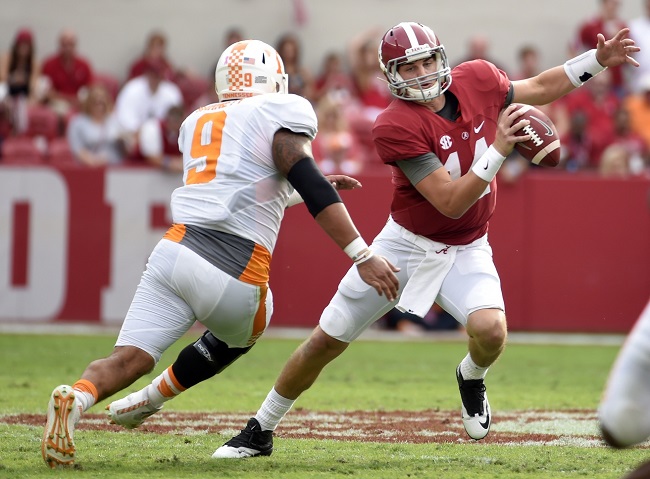
There are many ways to show how much Tennessee has improved under Butch Jones.
The most critical, perhaps, have been on defense.
Bob Shoop replaced John Jancek as defensive coordinator, but the past three seasons were much better than the Derek Dooley days.
Here’s a look at five numbers that show how much progress the Vols have made in the past four seasons.
Points allowed: Dooley and defensive coordinator Sal Sunseri gave up 428 points (35.7 ppg) in 2012. Jones and defensive coordinator Jancek improved on that during their three seasons together. Tennessee gave up 348 points (29.0 ppg) in 2013, 315 points (24.2 ppg) in 2014, and 260 points (20.0 ppg) in 2015.
Rushing yards allowed: Another area that has seen improvement in every season since Dooley’s final year is the amount of rushing yards allowed. The 2012 Vols gave up 2,267 rushing yards. Jones trimmed that to 2,261 in 2013 and 2,189 in 2014. Last season, the Vols took an even bigger jump, holding opponents to under 2,000 rushing yards for the season. The Vols gave up 1,971.
First downs allowed: In 2012, the Vols gave up 268 first downs (101 rushing, 149 passing, 18 by penalty). In Jones’ first year, opponents produced 255 first downs (129 rushing, 112 passing, 14 by penalty). The total continued to go drop in the past two seasons as the Vols gave up 244 (120 rushing, 110 passing, 14 by penalty) in 2014 and 235 (97 rushing, 120 passing, 18 by penalty) in 2015.
Opponent time of possession: Dooley’s 2012 defense spent 33:02 on the field, more than half of the game. Jones’ first team trimmed that to 31:11 in 2013. And it’s continued to fall. The past two years, Tennessee has won the time of possession battle. In 2014, opponents had it 29:46. Last season was even better: 29:28.
Opponent red zone scores: Dooley’s defenses couldn’t stop opponents inside the red zone. Teams were successful 43 out of 47 opportunities in scoring on the 2012 defense inside the red-zone. Jones immediately improved that. Opponents were only successful in scoring 36 out of 49 times in 2013. In 2014, opponents were successful once inside the 20 (32-for-34), but they didn’t get there nearly as often. Last season was even better: 31 out of 41.
Dan Harralson covers Tennessee football for SaturdayDownSouth.com. Follow Dan on Twitter @danharralson.







